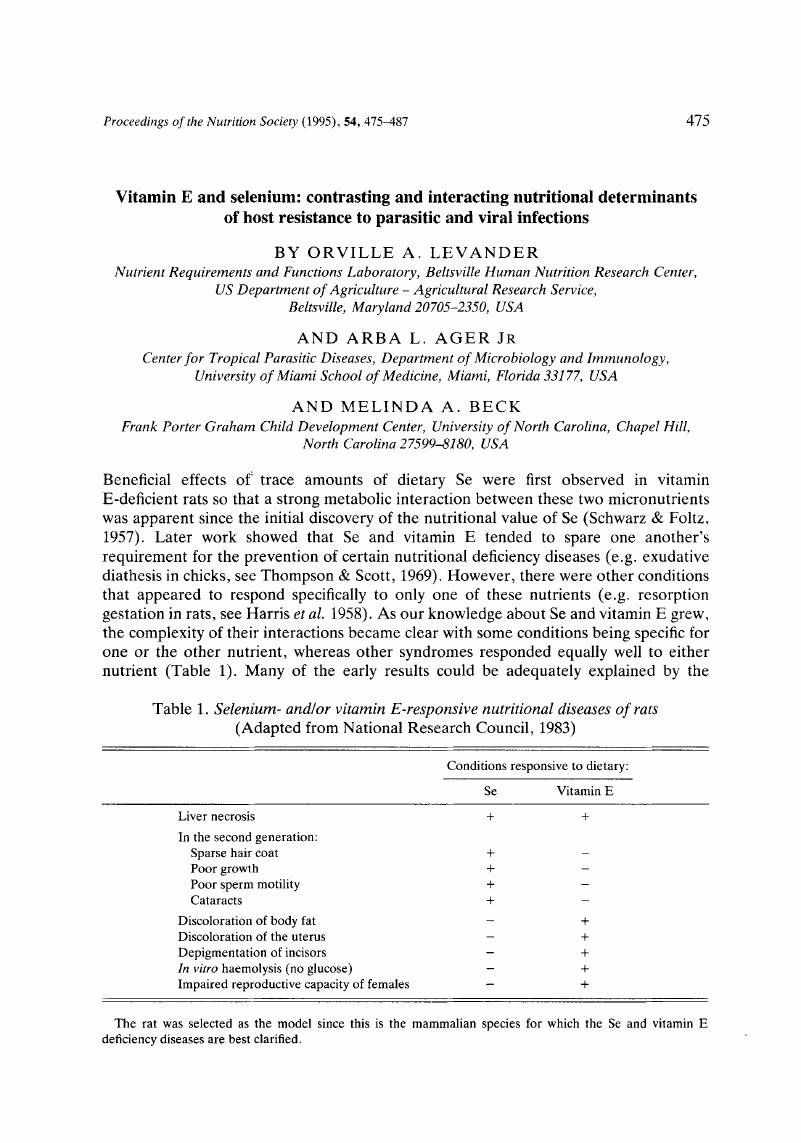Crossref Citations
This article has been cited by the following publications. This list is generated based on data provided by Crossref.
Reilly, Conor
1996.
Selenium in Food and Health.
p.
110.
Reilly, Conor
1996.
Selenium in Food and Health.
p.
180.
Ilbäck, Nils-Gunnar
Fohlman, Jan
and
Friman, Göran
1998.
Effects of selenium supplementation on virus-induced inflammatory heart disease.
Biological Trace Element Research,
Vol. 63,
Issue. 1,
p.
51.
Wichtel, J.J.
1998.
A review of selenium deficiency in grazing ruminants Part 1: New roles for selenium in ruminant metabolism.
New Zealand Veterinary Journal,
Vol. 46,
Issue. 2,
p.
47.
FRIMAN, GORAN
and
WESSLEN, LARS
2000.
Infections and exercise in high-performance athletes.
Immunology and Cell Biology,
Vol. 78,
Issue. 5,
p.
510.
Friman, Göran
and
Wesslén, Lars
2000.
Infections and exercise in high‐performance athletes.
Immunology & Cell Biology,
Vol. 78,
Issue. 5,
p.
510.
Serdaru, Maria
Vlǎdescu, Lumiņita
and
Avram, Nicolae
2003.
Monitoring of Feeds Selenium Status in a Southeast Region of Romania.
Journal of Agricultural and Food Chemistry,
Vol. 51,
Issue. 16,
p.
4727.
Harbige, Laurence S.
2003.
Fatty acids, the immune response, and autoimmunity: A question of n−6 essentiality and the balance between n−6 and n−3.
Lipids,
Vol. 38,
Issue. 4,
p.
323.
Harbige, Laurence S.
and
Gershwin, M. Eric
2004.
Handbook of Nutrition and Immunity.
p.
187.
Nestel, Penelope
and
Nalubola, Ritu
2004.
Handbook of Nutrition and Immunity.
p.
339.
Köhrle, J.
Jakob, F.
Contempré, B.
and
Dumont, J. E.
2005.
Selenium, the Thyroid, and the Endocrine System.
Endocrine Reviews,
Vol. 26,
Issue. 7,
p.
944.
Vega, Libia
Rodríguez-Sosa, Miriam
García-Montalvo, Eliud A.
Del Razo, Luz María
and
Elizondo, Guillermo
2007.
Non-optimal levels of dietary selenomethionine alter splenocyte response and modify oxidative stress markers in female mice.
Food and Chemical Toxicology,
Vol. 45,
Issue. 7,
p.
1147.
Kumar, Neeraj
Garg, Anil Kumar
Mudgal, Vishal
Dass, Ram Sharan
Chaturvedi, Vinod Kumar
and
Varshney, Vijai Prakash
2008.
Effect of Different Levels of Selenium Supplementation on Growth Rate, Nutrient Utilization, Blood Metabolic Profile, and Immune Response in Lambs.
Biological Trace Element Research,
Vol. 126,
Issue. S1,
p.
44.
Kumar, N.
Garg, A.K.
Dass, R.S.
Chaturvedi, V.K.
Mudgal, V.
and
Varshney, V.P.
2009.
Selenium supplementation influences growth performance, antioxidant status and immune response in lambs.
Animal Feed Science and Technology,
Vol. 153,
Issue. 1-2,
p.
77.
HERBAS, Maria Shirley
and
SUZUKI, Hiroshi
2010.
Vitamin C Deficiency Fails to Protect Mice from Malaria.
Experimental Animals,
Vol. 59,
Issue. 2,
p.
239.
Li, Jin-Long
Ruan, Hong-Feng
Li, Hui-Xin
Li, Shu
Xu, Shi-Wen
and
Tang, Zhao-Xin
2011.
Molecular cloning, characterization and mRNA expression analysis of a novel selenoprotein: avian selenoprotein W from chicken.
Molecular Biology Reports,
Vol. 38,
Issue. 6,
p.
4015.
Xu, Ming
Sun, Dongbo
Li, Jinlong
and
Xu, Shiwen
2011.
Monoclonal Antibodies Against Avian Selenoprotein W.
Hybridoma,
Vol. 30,
Issue. 6,
p.
563.
Qin, Feng
Zhu, Xiaoping
Zhang, Wei
Zhou, Jiaping
Zhang, Shiwei
and
Jia, Zhihai
2011.
Effects of Dietary Iodine and Selenium on Nutrient Digestibility, Serum Thyroid Hormones, and Antioxidant Status of Liaoning Cashmere Goats.
Biological Trace Element Research,
Vol. 143,
Issue. 3,
p.
1480.
Gao, Xuejiao
Xing, Houjuan
Li, Shu
Li, Jinlong
Ying, Tao
and
Xu, Shiwen
2012.
Selenium Regulates Gene Expression of Selenoprotein W in Chicken Gastrointestinal Tract.
Biological Trace Element Research,
Vol. 145,
Issue. 2,
p.
181.
Flueck, W. T.
Smith-Flueck, J. M.
Mionczynski, J.
and
Mincher, B. J.
2012.
The implications of selenium deficiency for wild herbivore conservation: a review.
European Journal of Wildlife Research,
Vol. 58,
Issue. 5,
p.
761.





